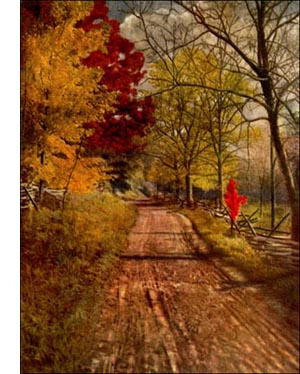Shortleaf Pine Tree
 Shortleaf Pine (P. echirnata, Mill.)-A slender trunk, with loose, round or pyramidal head, 8o to 120 feet high. Bark thick, cleft into square plates, with cinnamon-red scales. Young shoots violet. Wood orange or yellow-brown, hard, heavy, durable, strong, coarse grained, with broad bands of small summer cells in each annual layer. Buds plump, blunt, scaly. Leaves in clusters of twos or threes; dark blue-green; acute, slender, soft and flexible, 3 to 5 inches long, in silvery white sheath which turns brownish. Flowers: staminate crowded, subterminal, purplish; pistillate 2 to 4, stalked, subterminal or terminal on adventitious spurs; purplish or rose pink. Fruit biennial, abundant, Ill to 22 inches long, ovate, tapering, scales thickened, 4-angled at tip, with or without short, recurved prickle, seeds winged. Old cones persist several years. Preferred habitat, well drained, gravelly soil with clay intermixed; uplands of scant fertility. Distribution, Connecticut to Florida; west to Illinois, Kansas and Texas. Not continuous. Uses: Lumber used as P. palustris is. Young trees yield turpentine and pitch. Rarely planted. Reforests adjacent fields and lumbered areas by copious seeds and vigorous suckers.
Shortleaf Pine (P. echirnata, Mill.)-A slender trunk, with loose, round or pyramidal head, 8o to 120 feet high. Bark thick, cleft into square plates, with cinnamon-red scales. Young shoots violet. Wood orange or yellow-brown, hard, heavy, durable, strong, coarse grained, with broad bands of small summer cells in each annual layer. Buds plump, blunt, scaly. Leaves in clusters of twos or threes; dark blue-green; acute, slender, soft and flexible, 3 to 5 inches long, in silvery white sheath which turns brownish. Flowers: staminate crowded, subterminal, purplish; pistillate 2 to 4, stalked, subterminal or terminal on adventitious spurs; purplish or rose pink. Fruit biennial, abundant, Ill to 22 inches long, ovate, tapering, scales thickened, 4-angled at tip, with or without short, recurved prickle, seeds winged. Old cones persist several years. Preferred habitat, well drained, gravelly soil with clay intermixed; uplands of scant fertility. Distribution, Connecticut to Florida; west to Illinois, Kansas and Texas. Not continuous. Uses: Lumber used as P. palustris is. Young trees yield turpentine and pitch. Rarely planted. Reforests adjacent fields and lumbered areas by copious seeds and vigorous suckers.The shortleaf pine is short leaved only in comparison with the exceedingly long needles of P. palustris. The leaves are about the length of those of the Austrian pine, so familiar in cultivation, and beside which the Scotch and white pines are short-leaved species.
Next to the longleaf in rank, the shortleaf pine is one of the most important lumber trees in the Eastern and Southern states. Just a shade inferior to the former in quality, this species is likely by its vigour and wide range to become greatest of them all in economic importance as the exploitation of the timber lands of the South progresses. Against the destructive agencies at work the longleaf cannot hold its own. Its ultimate extinction must follow present methods of lumbering and orcharding. But the shortleaf pine, less sensitive to injuries, more prolific of seeds, able to renew itself indefinitely by throwing up suckers from the stump, and to survive shading of its saplings better than the longleaf and Cuban pines, has a distinct advantage over these, its compeers in the South and East. The distribution of the species is over a vaster area, and each grove is the centre of a growing and widening territory. If industriously colonises adjacent land abandoned by the farmer or the lumberman. In a free fight with hardwood trees this pine is the winner, and the young forests it is planting will be marketable in 8o to too years.
The forest centre of this species is west of the Mississippi and below the Arkansas River. This great tract was practically untouched at the time the tenth Census Report, issued in i880, estimated its merchantable timber then standing at 87,000,000,000 feet, board measure. This counted only the area in Texas, Louisiana and Arkansas, and left out the forests in Missouri and Oklahoma. There is little of the vast Eastern territory once covered by the shortleaf pine that has not been worked to some extent by lumbermen, especially where railroads make possible the distribution of the lumber. In the past twenty-five years astonishing inroads have been made upon the Southwestern forests.
While inferior to P. palustris, lumber of P. echinata is often preferred, because it is less resinous and softer and so more easily worked. Doors, sash and blinds are made of it and interior finish of houses. It is the common "yellow pine" of the Middle West, brought north on the river. It is the "North Carolina pine " which the kiln-drying process cured of its " black sap " and made a beautiful finishing lumber.